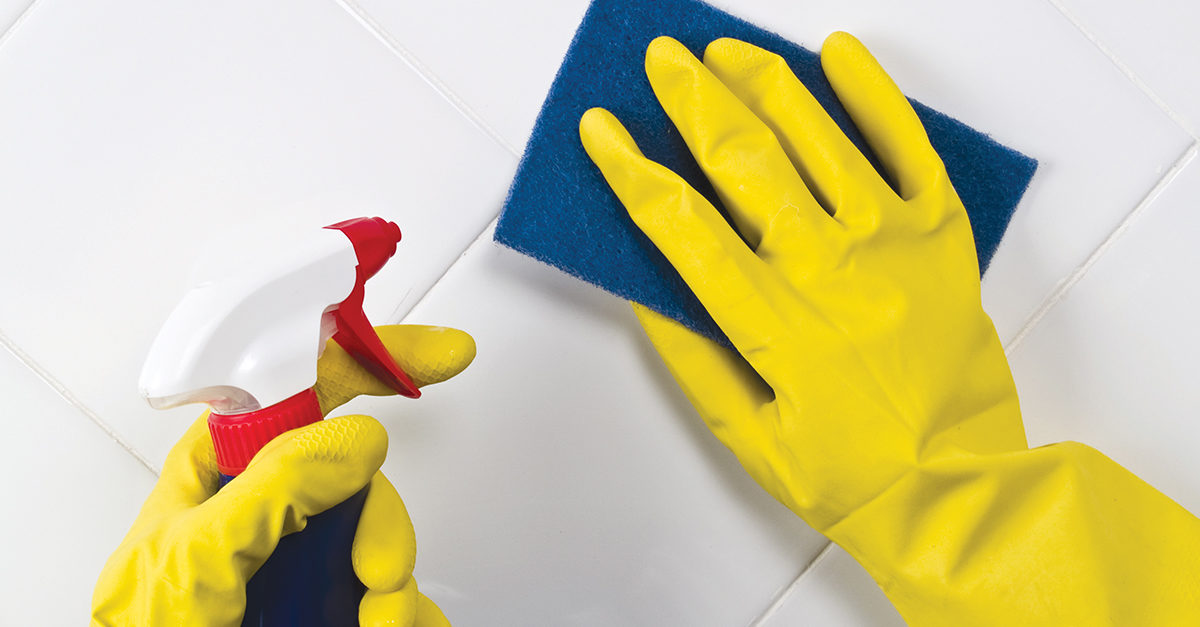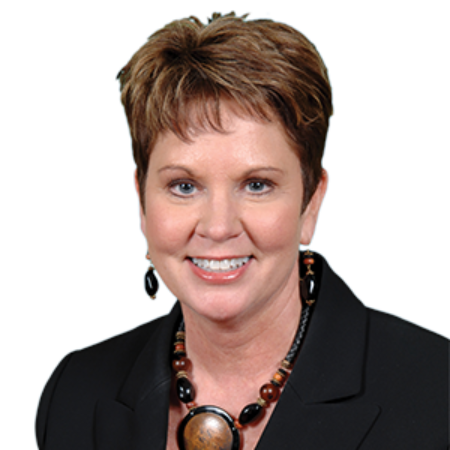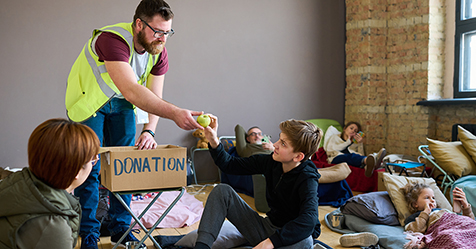It’s typically challenging to make it through this time of year without catching the cold or flu. Since there are approximately 200 viruses that can cause the common cold, millions of people are affected—usually several times throughout the year. To make matters worse, a quarter of the U.S. population contracts the flu annually. Those with the flu can also infect others beginning 1–4 days before their symptoms develop.
In addition to making people feel under the weather, cold and flu outbreaks can result in lost productivity and may negatively affect a business’s reputation if these outbreaks occur frequently or on a large scale. Facilities can prepare for periods of heightened outbreaks by implementing cleaning and disinfection best practices. Doing so will keep staff, students, patients, and guests safe and healthy. Further, it will reduce unnecessary absences and lost revenue.
Hidden Germs
Just as a person may look healthy but be sick, a surface can look clean but still house a significant amount of pathogens. A single sneeze alone can release 40,000 droplets, which can travel through the air and land on a variety of surfaces. Some pathogens can survive on surfaces for days—even months—making the environment a risk in the transmission of cold, flu, and many other illnesses. Pathogens can be transferred when a person contacts these dirty surfaces directly, or indirectly when someone touches a person who has these pathogens present on their hands.
Curbing Cold and Flu Outbreaks
According to a health advisory issued in late 2014 by the U.S. Centers for Disease Control and Prevention (CDC), the 2014-2015 flu season will be especially challenging because many reported cases (91 percent) have been a strain of Type A influenza, the most severe strain.
To reduce the spread of the cold and flu, facilities can practice and promote infection prevention tips, including:
- Promote proper hand hygiene. Unfortunately, not everyone follows basic hand hygiene measures.Hands can easily spread germs from one person to another, or to other surfaces, so facilities should encourage everyone to get in the habit of regularly washing and sanitizing hands. When hands are dirty, individuals should wash with hot water and soap or with an alcohol-based hand sanitizer if soap and water are not available.
- Encourage influenza vaccinations. Flu cases typically spike in January and February. Although getting the influenza vaccine doesn’t guarantee a person won’t contract the flu, it provides protection against some cases. Providing or requiring employee vaccinations can give individuals a barrier against influenza viruses that match or are related to the viruses in the vaccine.
- Educate staff on cleaning procedures. Facilities should ensure cleaning procedures are in place that detail what surfaces and equipment are to be cleaned and the order in which cleaning should occur. These procedures should also describe when to perform hand hygiene; when glove use is required; the cleaners, disinfectants, and tools to use; and the appropriate frequency of cleaning and disinfection. During times such as flu season when illnesses are acquired and spread more frequently, facilities should clean and disinfect more often and more thoroughly. This may require changing the traditional cleaning schedule to encompass more frequent cleaning of all common areas or assigning additional employees to cleaning and disinfection tasks.
- Disinfect high-touch surfaces. Surfaces such as door knobs, handrails, elevator buttons, desks, and countertops should be disinfected regularly or when visibly soiled using an U.S. Environmental Protection Agency or Health Canada-registered disinfectant. Employees should clean from high to low, from cleanest to dirtiest, and from dry to wet and ensure that the disinfectant remains on the surface for the appropriate dwell time.
- Promote proper illness etiquette. To further prevent the spread of the cold and flu, facilities should encourage proper etiquette among sick employees, occupants, and visitors. This includes limiting contact with others and high-touch surfaces, covering the mouth when coughing and sneezing, and disposing used tissues and paper towels. Remind people to practice these behaviors by placing signs and other communication materials in high-traffic areas such as lobbies and bathrooms.
- Ensure supplies are stocked. In some cases, people encounter a restroom without soap or paper towels, forcing them to compromise or forego their hygiene habits. Facilities should stock additional supplies of personal protective equipment (PPE), disinfectants, hand hygiene products, facial tissue, toilet tissue, trash bags, and cleaning cloths and tools. This will encourage ongoing compliance with infection prevention strategies.
- Monitor compliance. Compliance monitoring can help a facility ensure that workers are performing tasks as expected and can help identify areas for improvement. Facilities may elect to keep track of handwashing and sanitizing habits through automated hand hygiene monitoring and compliance reporting. Fluorescent markers can be used to measure surface cleanliness rates and highlight areas that tend to be ignored or are only partially cleaned. Organizations can also track PPE usage to ensure employees are wearing the proper protection when it is required or recommended.
As hard as people try to avoid illness, it can be nearly impossible to keep germs at bay if the places they frequent are not practicing proper cleaning and disinfection. Every facility—from office buildings, airports, and hotels to restaurants, schools, and hospitals—has a responsibility to protect staff, visitors, students, and patients. During cold and flu season, it’s even more important to have a sound infection prevention strategy in place. If organizations follow a set of best practices, they can not only reduce the frequency of outbreaks, but limit the impact of those that do occur.




